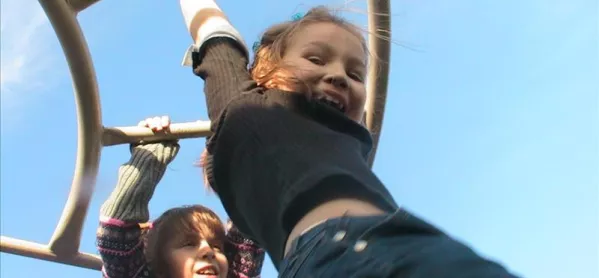Last year, 38 organisations from 16 countries and six continents signed the International Schools Grounds Alliance Risk Declaration. This stated that, even though promoting “risk-taking” on school grounds might raise questions of liability for schools, and concerns for parents, it was essential for a child’s development. School grounds should be as safe as necessary, but not as safe as possible.
It’s crucial for children to experience risks in order to understand their limitations. Taking risks gives them the knowledge and awareness to assess risky situations. It enables them to develop their resilience; a skill that will take them through their entire life.
While it may seem counterintuitive, a child getting a few bumps and bruises as part of their play experience can be a good thing - we all learn through making mistakes and we need opportunities to fail.
How to encourage risky play
Being able to fail occasionally within the safe, managed environment of the school grounds through risky play is a great way to start that journey. The world is full of risks and we need to bring up children who are able to recognise those risks and act accordingly.
So what does risky play look like? First, it isn’t about taking unnecessary risks, and the level of risk needs to be in proportion to the age of the child. As a baby crawls, they take small risks. As that child grows, the risks they will be exposed to become bigger when they learn to walk (how often do we fall as we learn to walk?), run, jump and climb.
Play spaces that draw inspiration from nature are often most appropriate for this type of play. Instead of equipment that has a prescribed use, children will use logs, boulders, sand and water in a wide range of ways. Having a variety of loose parts can also enable pupils to try out new things, create play features that have never been made before and provide opportunities for children of different ages to play together and support each other.
Risk is ‘ever-present’
Balancing risk, challenge and excitement with danger is essential, and schools should be encouraged to use a risk-benefit approach: weighing up the benefits of an activity or feature with the severity of the risk.
This is a view that the Health and Safety Executive advocates as well. They believe adventurous play is important, and that it allows children and young people to “explore and understand their abilities […] and exposes them to the realities of the world in which we live, which is a world not free from risk but rather one where risk is ever-present”. I couldn’t agree more.
There is a place for risky play in our schools. And Outdoor Classroom Day on 1 November is the perfect time to celebrate this and allow children to unleash their inner adventurer.
Mary Jackson is the co-founder of the International School Grounds Alliance and the projects manager at Learning through Landscapes.
